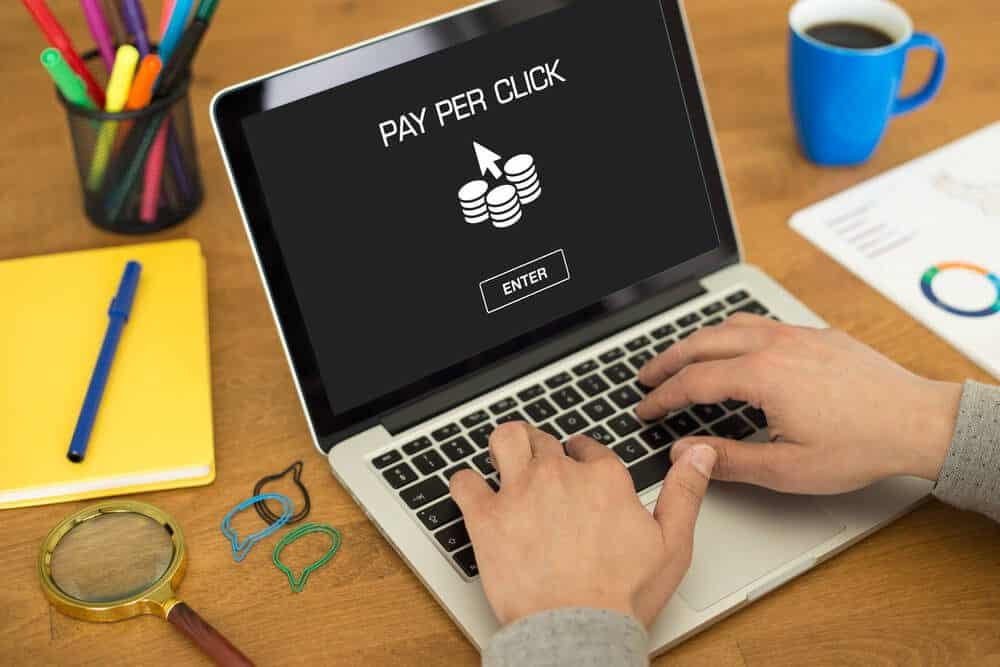
A B2B PPC Service and You: Money Matchmaking Tips
If you are a business-to-business (B2B) company, you must find ways to reach potential buyers. You need to engage your prospects and convert them to leads. This is where paid advertising comes in handy.
This guide explores how B2B pay-per-click (PPC) ads works and how to optimize your campaign strategies for a better return on investment. Whether you wish to hire a PPC agency or explore paid ads yourself, focus on the following monetizing strategies:
 Like any business, your goal is to promote your brand, increase sales, and improve revenue. You need an effective and cost-efficient PPC strategy to achieve your goals. Let us look at the five money matchmaking tips to optimize your PPC with B2B.
Like any business, your goal is to promote your brand, increase sales, and improve revenue. You need an effective and cost-efficient PPC strategy to achieve your goals. Let us look at the five money matchmaking tips to optimize your PPC with B2B.
- Finding relevant keywords
- Structuring campaigns using best practices
- Creating engaging ad copies
- Designing great landing pages
- Measuring results
If you want to learn how Digital Authority Partners can increase your PPC effectiveness, watch this video!
Why Does PPC Work for B2B?
PPC works for B2B companies because it puts ads directly in front of businesses actively looking for your services and products. There is no need to waste money and time on ineffective strategies like cold-calling, trade shows, and making follow-ups. B2B PPC works round the clock, even after office hours and during holidays. Your ads gather valuable clicks, direct buyers to your websites and service pages, and lead them to contact forms. Eventually, PPC helps your B2B company increase revenue and prosper. That is also perhaps the reason ad spending is expected to reach about $260 billion in 2022. More marketers value paid ads and will continue to include it in their marketing strategies.5 Top Tips to Monetize Your B2B PPC Strategies
 Like any business, your goal is to promote your brand, increase sales, and improve revenue. You need an effective and cost-efficient PPC strategy to achieve your goals. Let us look at the five money matchmaking tips to optimize your PPC with B2B.
Like any business, your goal is to promote your brand, increase sales, and improve revenue. You need an effective and cost-efficient PPC strategy to achieve your goals. Let us look at the five money matchmaking tips to optimize your PPC with B2B.
1. Spend Time Researching Relevant Keywords
Keyword research is the core of every PPC strategy. The right keywords help your ads reach more people. These lead more customers to your website’s landing pages, where you are ready to meet their orders. Finding the right keyword to use for your campaigns requires time and effort. Before you start a campaign, do a lot of research to ensure you will reach your target audience. But don’t stop there. Research during the middle of a campaign to find new and better-fitting keywords to improve ad performance. Take note of the following strategies for more effective keyword research.- Use effective tools. Keyword research tools like KeywordsFX, Google Trends, and FAQ Fox find the search volume and keyword value.
- Check competitor keywords. Use Google Ads to check the keywords that they are using. Enter their website URL to get recommendations. Learning the keywords they are ranking for helps you outrank them.
- Come up with an in-house keyword list. Take a look at the services or products you offer, the area you are servicing, and other relevant factors.
- Use Google Keyword Planner. This free online tool prepares keyword suggestions and forecasts keyword search volumes.
2. Follow Best Practices to Structure Your Campaign
Successful and profitable PPC uses relevant keywords and follows the best ad structuring processes. Ads have a hierarchy; if these are not structured correctly, you could waste money on underperforming campaigns. The Google Ads structure comprises the following:- Accounts
- Ad campaigns
- Ad groups
- Keywords
- Come up with a separate campaign for branded keywords. Create different ads for users who already know your business and those who do not. This allows better targeting and engagement.
- Develop campaigns that promote your marketing goals. For example, arrange non-brand campaigns according to your sales funnel levels, geographic targets, or service types. Build a structure that allows you to track your clients’ progress and guide them.
- Create a naming convention that is clear to everyone. Map these terms out in a spreadsheet using expressions like “Pioneers” or “Group A” for the first clients who ordered your service. This avoids confusion and streamlines your PPC management in the long run.
3. Create Compelling Ad Copies
It is easy to get caught up in the design and forget the most important part, which is your ad copy. A good piece of copy is engaging, helpful, and converts the audience. The two search engine elements are headline and description. The headline tells users what the ad is about, while the description gives further details about what they should expect when they click. You also need an image to display in your ads, like your products or services. Work with a graphic designer to create a great image. Create the best copies for your B2B PPC with the following tips:- Personalize copies. Ensure that these match your audience needs, pain points, and issues.
- Use credible statements. Include testimonials or social proof to promote trust and establish authority.
- Add a call-to-action (CTA). Include this in your copy to help users understand what they need to do next.
- Make headlines more meaningful. These could ask questions, fix problems, be humorous, or be keyword-rich to connect with your customer query.
4. Develop Great Landing Pages
Match enticing copy with a stellar landing page. The two should be related—the landing page’s content expands on your ad copy. If your ad is about a free trial of your inventory software, your landing page must include this offer and information about your software. The page should have a form your clients will fill out to take advantage of the offer. In addition to these, your landing page copy must load fast. It should be intuitive and responsive as well. Take note of these landing page creation tips.- Optimize for mobile. Most internet users, around 92.1%, use a mobile device to go online, so do not overlook this opportunity. Use expanded text ads, write compelling content, and use the right assets.
- Be direct and to the point. Use concise messaging and plain language that your users understand. You may elaborate on your message, but do this below the fold.
- Use the above-the-fold strategy. Place essential information and your CTA at the top of your landing page. This ensures that your visitors see your offer and take action no matter where the fold ends on their screens.
- Add visuals. Use images that grab your audience’s attention and complement your messaging and offers.
- Avoid distractions. Make your visitors focus solely on your offer and fill out your form. Avoid all opportunities that could make them exit your page.
- Ask for the help of a webpage developer. An expert helps you create stunning, readable landing pages on different devices.
5. Monitor Campaign Results
Ensure that your ads are driving more conversions by monitoring and measuring results. Monitoring helps you make make changes quickly to improve outcomes. Run your monitoring in Google Ads by choosing your campaign and going to the “Drafts and experiments” section of the menu. Collect enough data to support your decisions before making any changes. Use Google Analytics with Google Ads to access additional key performance indicators (KPIs). Remember these when monitoring.- Monitor your impressions and impression share. This is the number of times Google displays your ad in search. For ten displays in one day, you have ten impressions. If it was qualified to show in 50 searches on a specific day but appeared only in ten, then you have a 20% impression share.
- Note your clicks and click-through rates (CTR). This value divides the total number of clicks from your total impressions. CTR is the proportion of ad viewers who clicked on the ad. A high CTR means that the ad is doing a great job of catching your customers’ attention.
- Check your conversion rate. This is the most influential PPC metric, because your goal is for your visitors to convert. To get the this rate, divide your conversions by your clicks. This tells you the number of visitors who clicked and converted. Low results mean you must improve your landing pages to promote user intent.
- Define your average cost per click (CPC). This metric tells you how much you spent on a specific campaign. CPC is how much you pay every time someone clicks on your ad. To get your CPC, divide your total cost for an advertisement by the number of clicks it has earned.
- Know your cost per acquisition (CPA). This is also your cost per conversion and customer acquisition cost (CAC). It tells you how much each conversion costs. Divide the total cost of your campaign by the total conversions received. A high CPA means it costs a lot to convert a user.
- Get help with your PPC. Hire a B2B PPC consultant to improve your paid ads strategies.
Summing Up
Whether your B2B goal is to increase sales or generate leads, you need an excellent paid ad strategy to optimize and monetize your campaigns. Follow our tips to find relevant keywords, structure campaigns, create engaging ad and landing page copy, and monitor results to make the most out of your paid strategies. Contact Digital Authority Partners today to find out how PPC can improve your B2B ads.Want To Meet Our Expert Team?
Book a meeting directly here



